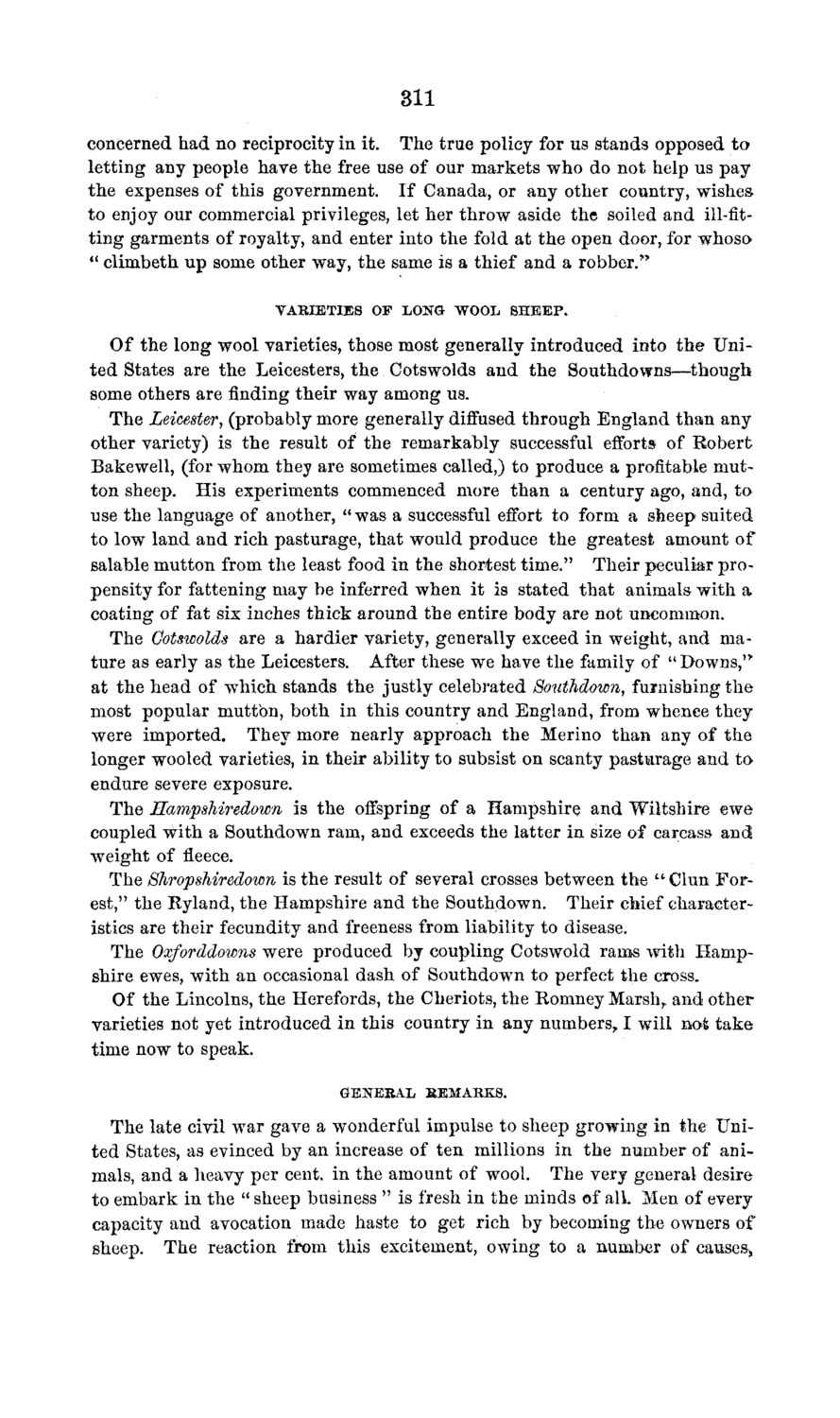| |
| |
Caption: Board of Trustees Minutes - 1869
This is a reduced-resolution page image for fast online browsing.

EXTRACTED TEXT FROM PAGE:
311 concerned had no reciprocity in it. The true policy for us stands opposed to letting any people have the free use of our markets who do not help us pay the expenses of this government. If Canada, or any other country, wishes to enjoy our commercial privileges, let her throw aside the soiled and ill-fitting garments of royalty, and enter into the fold at the open door, for whoso " climbeth up some other way, the same is a thief and a robber." VABIETIES OF LONG WOOL SHEEP. Of the long wool varieties, those most generally introduced into the United States are the Leicesters, the Cotswolds and the Southdowns—though some others are finding their way among us. The Leicester•, (probably more generally diffused through England than any other variety) is the result of the remarkably successful efforts of Robert Bakewell, (for whom they are sometimes called,) to produce a profitable mutton sheep. His experiments commenced more than a century ago, and, to use the language of another, " was a successful effort to form a sheep suited to low land and rich pasturage, that would produce the greatest amount of salable mutton from the least food in the shortest time." Their peculiar propensity for fattening may be inferred when it is stated that animals with a coating of fat six inches thick around the entire body are not uncommon. The Cotswolds are a hardier variety, generally exceed in weight, and mature as early as the Leicesters. After these we have the family of "Downs,"' at the head of which stands the justly celebrated Southdown, furnishing the most popular mutton, both in this country and England, from whence they were imported. They more nearly approach the Merino than any of the longer wooled varieties, in their ability to subsist on scanty pasturage and to endure severe exposure. The Hampshiredown is the offspring of a Hampshire and Wiltshire ewe coupled with a Southdown ram, and exceeds the latter in size of carcass and weight of fleece. The 87iropshiredown is the result of several crosses between the " Clun Forest," the Ryland, the Hampshire and the Southdown. Their chief characteristics are their fecundity and freeness from liability to disease. The Oxforddowns were produced by coupling Cots wold rams with Hampshire ewes, with an occasional dash of Southdown to perfect the cross. Of the Lincolns, the Herefords, the Cheriots, the Romney Marsh, and other varieties not yet introduced in this country in any numbers, I will not take time now to speak. GENERAL BEMABKS. The late civil war gave a wonderful impulse to sheep growing in the United States, as evinced by an increase of ten millions in the number of animals, and a heavy per cent, in the amount of wool. The very general desire to embark in the " sheep business " is fresh in the minds of alL Men of every capacity and avocation made haste to get rich by becoming the owners of sheep. The reaction from this excitement, owing to a number of causes,
| |